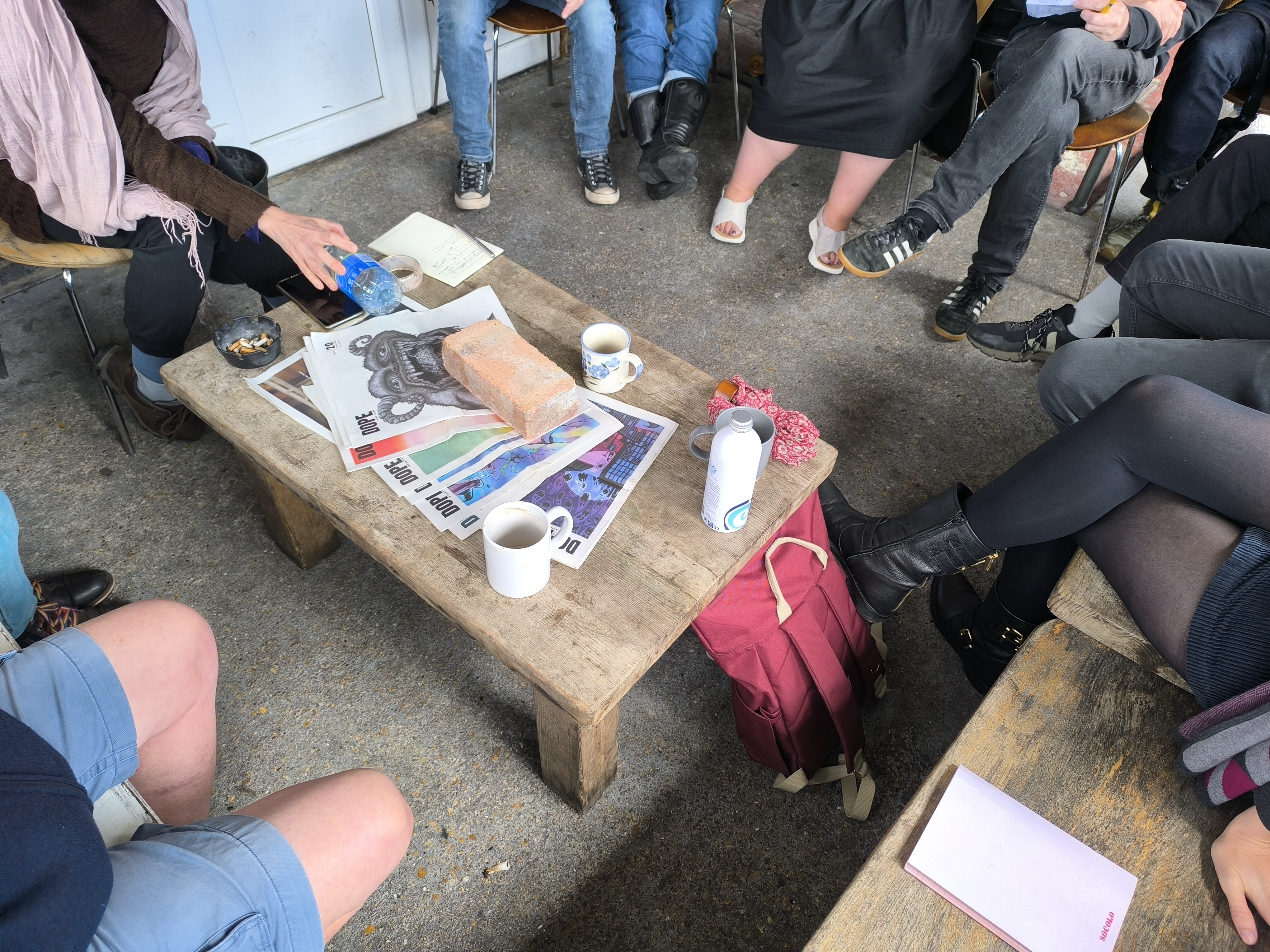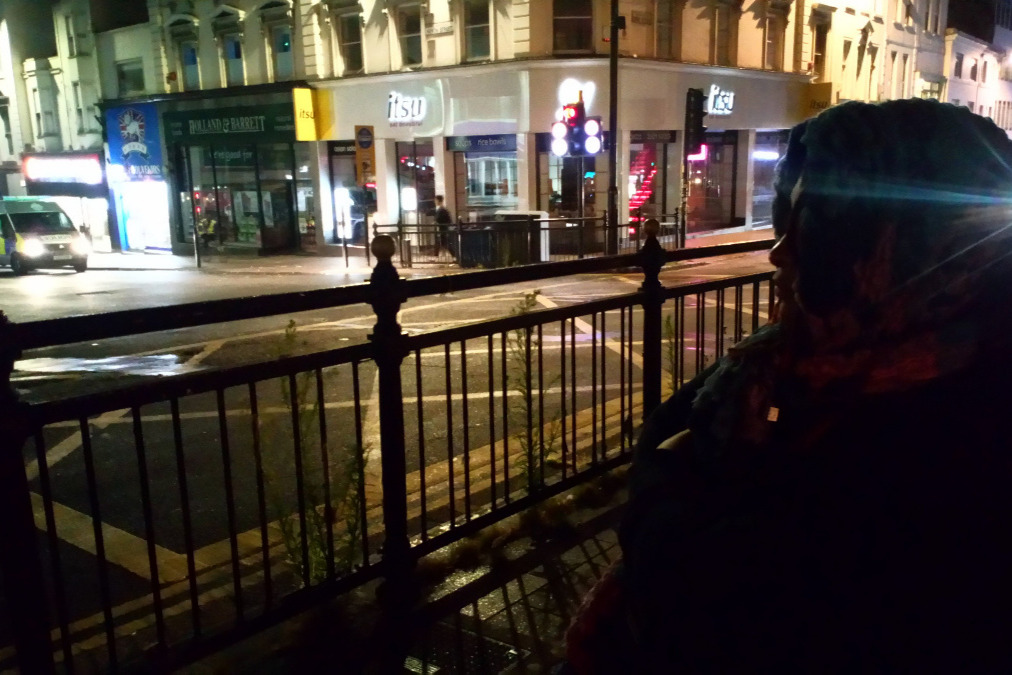October 20th saw the TUC’s second national demonstration against austerity: “A Future That Works”. An estimated 150,000 turned out to march through London, past parliament and finish with a rally at Hyde Park. During the rally, calls for a general strike were well received and seemed more entrenched than last year and it was heartening to see Ed Milliband booed while delivering his speech. Plan C had it’s first outing and distributed a pamphlet along the route, this explained our understanding of Plan A (Austerity), B (an array of nostalgic returns to Keynesianism) and how we understand Plan C. This is now avaailable on our website. We also ran a crèche to accommodate activists with children which was a success.. In addition to official action backed by the TUC, Education and Radical Worker blocs, as with previous demonstrations, fed into the main march whilst DPAC and Boycott Workfare took direct action against austerity along Oxford Street. However, despite the plurality of action and the acceptance of confrontational tactics, “A Future That Works” seemed much more subdued and much less filled with possibility than last year.
The march itself was much smaller than last years “March For The Alternative” -150,000 instead of the previous almost half a million. In the run up unions and activists seemed to struggle to find support and there have been reports of many coach spaces down not being taken up. Perhaps this is due in part to an increased cynicism of grassroots activists and trade unionists, sick of A to B marches with no discernible outcome. But there seems to be an absence of hope and excitement of new possibilities this time round as well. We should look at the context of the previous “March For The Alternative” – the first major trade union action against austerity, still riding the wave of Millbank and the student protests, with cops on the back foot and a very real chance of taking over the streets every time a demo was called. There was a sense then that a demonstration was so much more than the traditional marches that we’re used to and that they actually felt part of the struggle, something worthwhile. Last Saturday however marked a move back to the familiar ground of the traditional left and the march as action that we have all seen rolled out uselessly and inevitably fail time and time again. Maybe this is understandable though, compared to last year austerity is now very firmly in place and has opened more fronts than we can deal with. With cuts starting to bite and the knowledge that so much more is just ahead ready to crash down on us it’s no wonder the left sometimes seems like a rabbit caught in the headlights. With cynicism and despair setting in of course it seems safer to cling to old forms of action learnt by rote. In the meantime though we’re faced with an absence of strategy and a return to the old identities we thought had been washed away during last years action.
In addition to the march, Boycott Workfare and Disabled People Against Cuts took part in direct action. DPAC created a roadblock by Marble Arch whilst Boycott Workfare converged on Oxford Circus to attempt to blockade businesses signed up to workfare, eventually engaged in a game of cat and mouse with cops the length of Oxford Street. On the surface this may seem to capture more of the attitude and atmosphere of last year. It does feel part of a shift that more militant action is now commonplace on demonstrations and it’s more or less expected that a section will break off to engage in an unsanctioned taking of the streets and confrontation of cops and businesses. However, this expectation also takes out some of the energy and danger that was characteristic of direct action last year. The occupation of Fortnum and Masons and the Black Bloc during the “March For The Alternative”, like the student protests before them, broke down the identities that kept protest at a convenient arms length with the general public as spectator. The threat that these actions created was in the crossover of participants and the blurring of the lines between political identities – although certain sectors did try and paint the good protestor/ bad protestor picture in reality these divisions were much harder to make than previously, as people moved freely from trade union march to UK Uncut action to Black Bloc. This created a situation where it didn’t matter what political background or involvement you held previously, something new was created in that moment as people struggled together on the streets. The threat that this carried was that of generalised resistance and a unity of struggle. One of the most disheartening things to see on Saturday was trade unionists pouring down Oxford Street from Hyde Park completely oblivious to the fact that just a few minutes before protesters had been trying to take that very street.
All of this isn’t to say that we should try and recapture what happened last year, in actual fact that is what each action tried and failed to do on the 20th. The reason for that failure was because of a failure to recognise that the situation and mood has changed since last time. The struggle against austerity and Neoliberalism has deepened and there is a need for strategic action to match it. Rather than retreating to the safe, old, familiar political identities we should be building on the new subjectivities that emerged last year.
We should be constantly pushing forward in our action, trying to get to the next thing that seems energetic and uncomfortable. Maybe this is why the calls for a general strike are louder this time and in a way that’s inspiring – people aren’t willing to do the same old tactics each and every time but want something new and aren’t afraid of that being more confrontational or illegal. But if that happens we should be pushing forward again, making sure it goes beyond just the public sector and just unionised workers.
At a time when longer term resistance and firmer political links and organisation of ourselves is needed, the new identities and forms of politics that we saw in the student protests and the TUC demonstration last year seemed to have retreated and left this terrain back in the hands of the traditional left. What happened last year though shouldn’t be put down to just a momentary flash of insurrection and the politics of previous generations seen as the proper way to organise. We should be revisiting those new relationships and subjectivities that were created on the streets between workers and students, anarchists and trade unionists, occupiers and marchers as the very basis for radical organising against austerity and capitalism.





